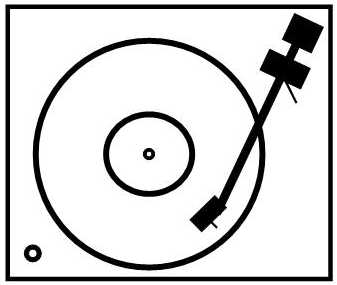
Pladespilleren.dk 
Tona T 20/40 SUT - Moving Coil Step Up Transformer - made in Denmark
Manufacturer: TONA Danmark - price DKR 22.000,- / Euro 2,960
Latest update 17. December 2021
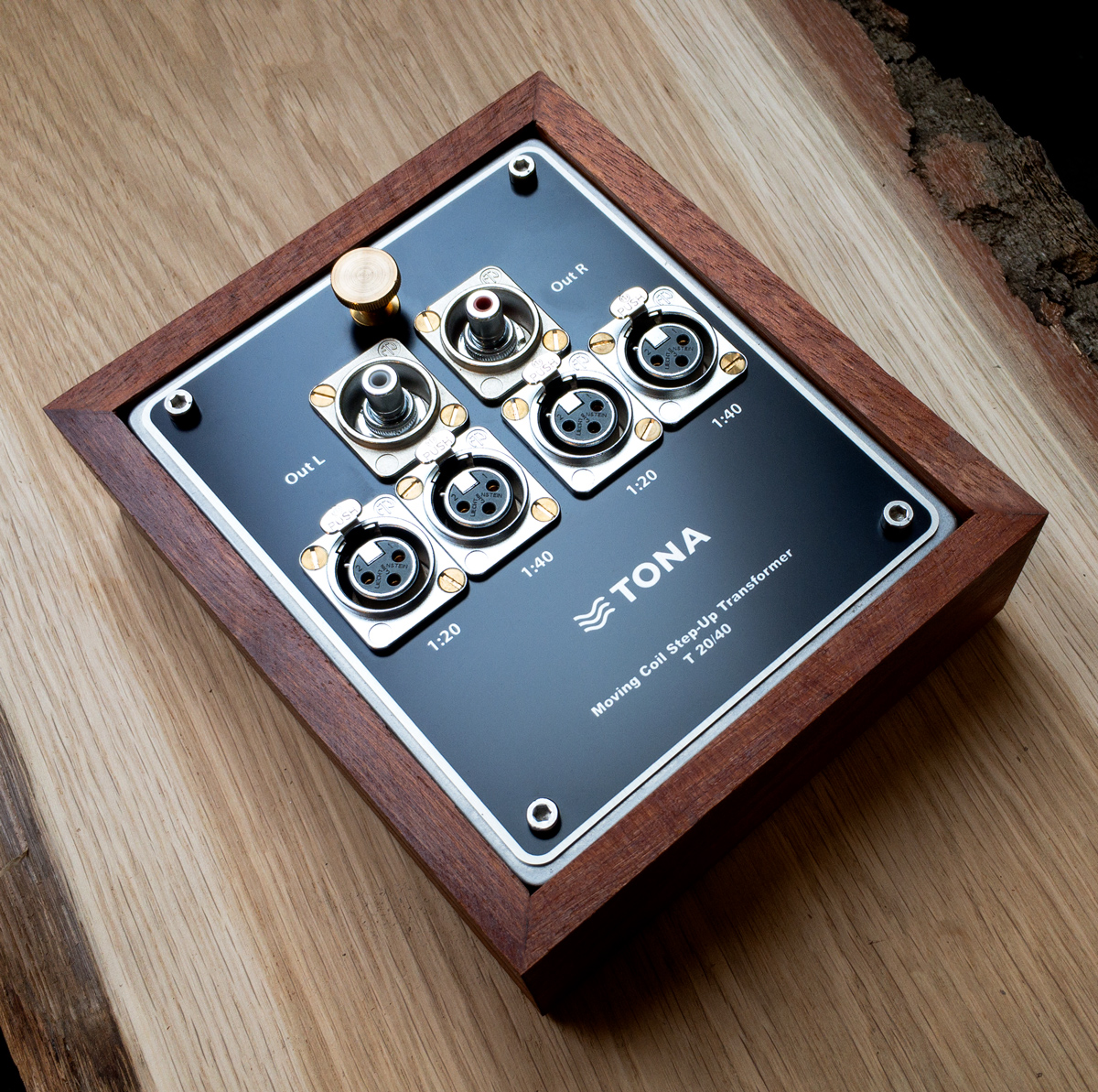
Usually
when we here in Denmark talk MC transformers (SUTs or Step Up Transformers) most people will
probably think of Ortofon or maybe Swedish Lundahl. But here it is somewhat
surprising about a brand new Danish developed MC step-up from Tona Audio. The
development has taken place in collaboration with Jakob Erland from Gyraf
Audio. A quick look at his page shows studio equipment like mixers, microphone
amplifiers, equalizers and more. Everything is with tubes and transformers
both internally and at inputs and outputs. All with his own transformers.
Now it is not every day the professional sound world and hifi collides, but
here we have an example. It is also seen in the design. Should you have
forgotten what an MC transformer is, it is for use between an MC cartridge and a
normal RIAA input. For those who want to know more, there is an explanation on
this page: - LINK. For a calculations
with your own MC cartridge, you can find an Excel
spreadsheet, which can be downloaded here: MC TRAFO – SPREADSHEET
The first
thing you notice with the Tona T 20/40 is the weight - as much as 4.2 kgs /8 lbs. Next, that it comes with a
balanced input. If desired, it can also be delivered with a balanced output (Where will i find af RIAA wiht balanced in?).
The T 20/40 I have listened to has balanced in and RCA out. Small converter cables
are included if you want to use RCA on the XLR inputs.
Of course,
I tried to connect my fully balanced Analysis Plus tonearm cable. But it did
not work. T 20/40 uses the coupling seen in professional contexts. It converts
an unbalanced signal into a balanced coupling. In this coupling, the standard
is that pin 3 is coupled to the ground. It is the IEC 268-12 standard.
Absolutely OK when you know that. With my Dyrholm tonearm cable there were
absolutely no problems.
Tona T
20/40 appears as a large "block" with the terminals on one side. On
the underside there are 4 rubber feet. The solid wooden frame is included, but
it is optional if you want to use it. There are two inputs - here balanced with
XLR connectors. Converter cables are included, so you can also use normal. RCA
cables in. One input has a turnover ratio of 1:20 and the other 1:40. The
outputs are via RCA. One could have chosen a switch between the two inputs, but
has instead Tona went for the more puristic approach with two inputs. Note that the
two inputs cannot be connected at the same time. The box must definitely not be
opened. In that case, the warranty will lapse and the orientation and alignment
of the transformers will change, affecting the excellent data.
The two inputs will give different loads as well as gain. 1:20
will give 26 dB gaih and a load of 118 ohm, which will be
fine wiht most good MC catridges. The 1:40 indput has 32 dB gain and
will load the cartridge with 30 ohms. (Both loads are with
a 47k RIAA input). This latter input will be fine wiht very low
impedance cartdiges with low output. Ie. Audio Note, Ortofon, My
Sonic Labs and others. With my Ikeda 9Gss it was a perfect fit
(0,28 mV out an internal impedance 2,8 ohms).
 |  |
| Tona T20/40 wuth cables inserted. On the right my Lundahl LL1933Ag built into a copper box.. | Converter cables from XLR to RCA are enclosed with the Tona. . |
Transformer
technology and materials
Sorry, but
now it's getting a little technical. The technology around transformers is a
science in itself. I have touched on it in my test of Lundahl LL 1933Ag and
here on the page MC-Trafoen - this is how it works(see link above). In my review of the Lundahl
transformers, I describe it as follows: “Lundahl LL1933 is with mu-metal core
(nickel) and the corresponding LL 1931 with amorphous cobalt core (amorpheus
cobalt core). Whether one is better than the other, I should not be able to
say, but there are differences ”. Swedish Lundahl himself describes LL 1933 as
follows: "For those who prefer a low core distortion, and
linear magnetic curve from a nickel laminate core" It should sound a
little warmer and more comfortable, where the cobalt core in LL1931 is actually
more neutral and a bit more smooth and revealing.
 To put
it another way. It's a matter of taste. I then chosed the version with nickel
laminate. Went for the sound at the expense of details. But here in the Tona MC
transformer we have a completely third core material. A material that emerged
in the mid-90s, but which has only recently been used for this purpose. A
nanocrystalline core in the form of a ring core with hand-wound conductors. On
the primary side, they use a thicker litz thread.
To put
it another way. It's a matter of taste. I then chosed the version with nickel
laminate. Went for the sound at the expense of details. But here in the Tona MC
transformer we have a completely third core material. A material that emerged
in the mid-90s, but which has only recently been used for this purpose. A
nanocrystalline core in the form of a ring core with hand-wound conductors. On
the primary side, they use a thicker litz thread.
In a pure
amorphous material there should be no crystal structure. The atoms are placed
randomly and there is no repetitive pattern, as one finds in most solid metals.
To achieve this, molten metal must be cooled so rapidly that the atoms are
locked in their random positions. This very fast cooling requires that the
metal is in the form of a very thin film, with a thickness of about 0.025 mm.
To obtain the nanocrystalline core, special amorphous metal is used, which is
treated in a controlled process where small nanocrystals occur.
But what is
the advantage of nanocrystalline cores? They have a much higher saturation and
can transfer more energy despite smaller sizes. Precisely the size of a
SUT can be critical when we talk about the number of
windings and possibly loss. These cores have a very high permeability, high
saturation, low coercivity and low core loss. One can reduce the transformer
core compared to a traditional Ferrite core.
Last but
not least, we need to keep in mind, that an MC transformer processes a
non-linear signal. With the RIAA corrected signal from the record, there is far
greater output at high frequencies than in the bass. In fact, it varies by as
much as 40 dB. Conversely, this means that when 0.01 mV is transmitted in the
bass, 1 mV is at the highest frequencies.
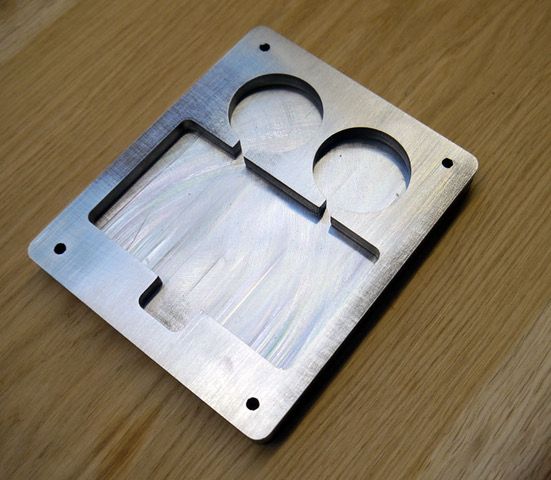 | 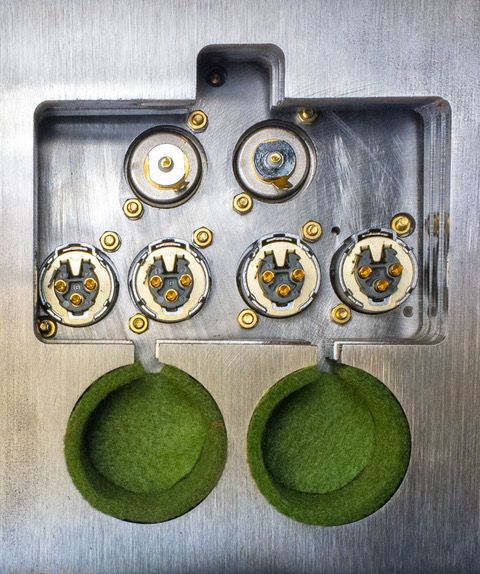 |
| Internally
you see the laminatede soft iron build. Several layers ar bolted
together. Picture supplied froam TONA- DO NOT TAKE IT APART! | Here
a view from the bottom and up against the terminal with XLR and RCA
connectors. The two round chambers are for the nanacrystalline
SUTs. |
Tona
T 20/40 structure
The very
heavy cabinet itself is made of several layers of laser cut soft iron. Now I
better understand why it is so heavy. In two round chambers are the two
transformers. The many iron slats are assembled via four long Allen bolts in
the corners. They go all the way through and down into four rubber feet with
nuts. The beautiful exterior wooden box is for decoration or as Tona states;
for hanging on a wall.
Tona says that the transformer is a good match for tube amplifiers, as the
very high gain at 1:40 (31 dB) can be an advantage with low volume and use of
(tube) RIAA preamps with a good dynamic range. At the same time, 1:20 with a
more all-round 26 dB gain is usable for most pickups. A typical tube RIAA has a
gain of about 40 dB, so with the transformer on, it gives resp. 66 and 71 dB.
Even with my old Ortofon MC 5000, which only gives out 0.14 mV, it worked fine
with the 32 dB gain. If you count on it, it provides 5.6 mV for the subsequent
RIAA, which should be enough for most purposes. However, I primarily used the
Tona MC 20/40 with my Ikeda 9Gss pickup via the 26 dB input. It provides an
output signal of 5.5 mV to the RIAA.
The
price may seem high, but compared to typical high end SUTs it's not
wild. The best i have tried so fari is Ikeda IST-201, which cost
approx. DKR 30.000,- (Euro 4000,-) There are few othe SUTs on the
market with nanocryslalline cores. I could find the Consolidated Audio
MC Step Up Transformer, which costs around 4.000 Euro. The Thrax Troja
for 3.600 Euro and the small French Sculpture A - Mini Nano stepup for
just over 1.000 Euro (specially desinged for the Denon DL103)..
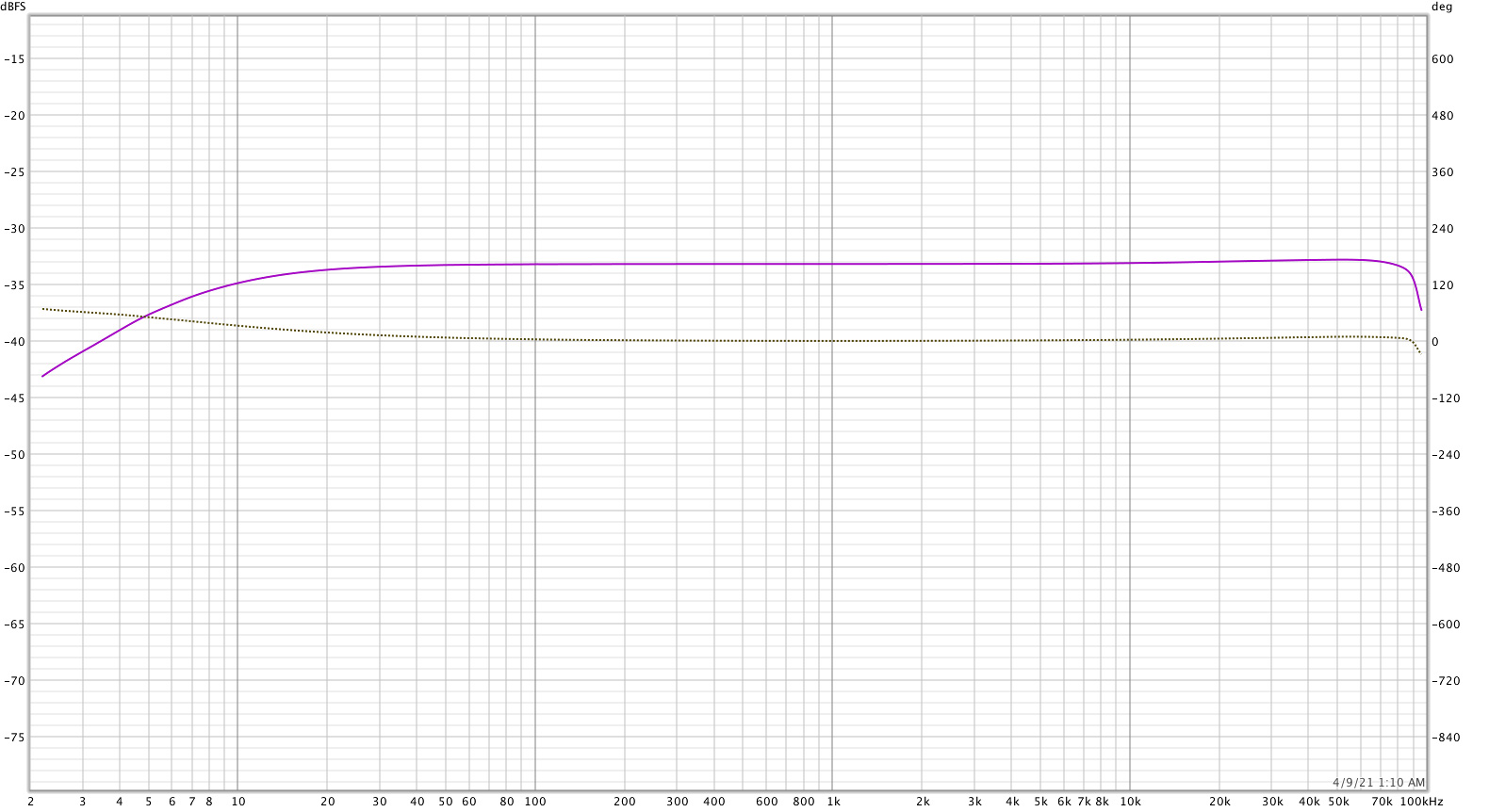
Specificaations
• Two inputs - 1:20 og 1:40
• Can be deliverede with XLR or RCA
• Laminated lasercut soft iron chassis.
• Nanocrystallin torid core SUTs
• Primary resistance 0.1 Ω (1:40)
• Secondary resistance 25 Ω
• Induction matched transformers.
• Frequency range (5Hz-100kHz -3dB at 4Ω/20KΩ) – se measurement
• Phasedeviation (0.9 degrees at 20kHz)
• Stereo matched to 0.3 dB 20Hz-20kHz
• Rhodium phono RCA, gold XLR
Dimensions: 125 x 150 x 46 mm - Total hight 63 mm
Weight 4.1 kg
That's how
I did it
T 20/40 was
used with several different cartridges. Primarily my Ikeda 9Gss and Hana Umami
Red. However, there was also a FR MC201 as well as an Ortofon MC 5000 and a few
other slightly older cartridges in over. An
Allnic H-5500 RIAA was used, as well as the MM input on my Accuphase C-27 RIAA.
Heavy and
solid
From the
first notes I noticed that the rendering is open and weighty. There is a
clear layer in depth and a resolution that captures the details in their proper
place. It all seems much calmer and with profit. My otherwise excellent Lundahl
LL 1933Ag had to see himself beaten at the finish line (The level differences
were compensated for). It sounds a bit pressured in relation to Tona.
Especially with voices and choirs, where many things happen at once, Tona
maintains a rock-solid calm and an ability to separate it all from each other. It
also has an amazing firm bottom octave and more control. Dynamically, it is also at
the very top. All small strokes and echoes are exactly in the soundstage.
Compared to the built-in transformers in the Allnic H-5500, there is more
openness and dynamism. It all "breathes" differently freely. On the
other hand, the price is also almost on par with the whole excellent RIAA from
Allnic.
| Trafo | Omsætningsforhold | Gain | indgangsimpedans |
| Tona T 20-40 | 1:20 | 26 dB | 118 ohm |
| Tona T 20-40 | 1:40 | 32 dB | 30 ohm |
| Lundhal LL 1933 Ag | 1:16 | 24 dB | 184 ohm |
The music
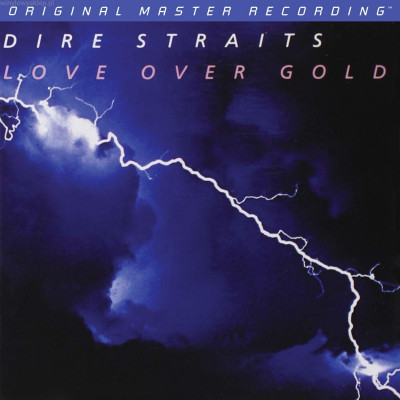
Dire
Straits - Love over Gold. This very impressive track clearly shows all
aspects of a facility. Dynamics, size and resolution. I have heard it many
times. Here the Mobile Fidelity version at 45 rpm. There is space and an
overview. Definitely also control and a nice feeling that it all flows
effortlessly. Have rarely heard this track in the same revealing and
effortless way.
Sade /
Stronger than Pride has been around for a few years, but it is super produced.
Here is the song "Love is stronger than pride" with a large open
listening window. The voice is clearly placed at the back at a good distance
and in its own (artificial) space. Percussion and other instruments blend in in
a natural way and when the male voice comes in, you can clearly hear the two
voices separated in the soundscape. The same track via my Lundahl sounded a
little more pressured and at times somewhat less defined up through the
midrange range.
Billie EilishLana
del Ray / Norman Fucking Normal is still one of the best she's made. There is
just more space and presence we Tona transformer. It all stands more smooth and
distinct. The soundscape is just a bit wider and a little more is
happening. Her voice almost breathes and is very clear in the soundstage. Yes,
this is definitely really good.
 Billie
Eilish with her new "Happier tthan Ever" offers an excellent voice
and a somewhat melancholy mood. The sound is at times alluring and almost
hypnotic and then changes to the violent and almost unpleasant. All aspects are
clear and even in the violent sequences the overview is preserved. The voice is
at the forefront with a wealth of details. Her singing and recitation is
surrounded by air and with good space in the soundstage, In short excellent .
Billie
Eilish with her new "Happier tthan Ever" offers an excellent voice
and a somewhat melancholy mood. The sound is at times alluring and almost
hypnotic and then changes to the violent and almost unpleasant. All aspects are
clear and even in the violent sequences the overview is preserved. The voice is
at the forefront with a wealth of details. Her singing and recitation is
surrounded by air and with good space in the soundstage, In short excellent .
There was a
brief change back to the MC entrance on the Accupahse C27. Nice and smooth, but
lacks a little dynamism and some of the exciting and engaging in the music.
Here we are then at the question of the SUT versus an active MC input.
In this case, the vast majority, if not all active solutions, will be show their limitations compared to the SUT.
So how big
are the differences between the three transformers I used? Tona T 20/40,
Lundahl LL 1933Ag and the built-in transformers in Allnic H-5500. There are
definitely bigger differences than e.g. between cables. I would rather say
these are the same differences one can find between otherwise good cartridges. Not
like between a good MM and a similar MC. The differences lie in the depth and
precision of the soundstage, as well as in the microdynamics and the very small
details. Also keep in mind that we are talking voltages of less than 1 / 10,000
part of a Volt. Differences that are magnified again after the reinforcement in
your RIAA. Differences right at the source can definitely be heard.
Conclusion
I think it
is brave and absolutely beautiful that Tona throws themselves into making a high
end SUT. To be able to fully appreciate the absolute qualities
it offers, it requires a good cartridge, as well as a good RIAA. I do
not know how many potential customers there are in little Denmark. But those
who have the opportunity should definitely try it, because this is world class.
Tona T 20/40 is going out into the big world showing what we can do here in
Denmark. It's a SUT that has shown extra details and more musical enjoyment from my
favorite cartridges. It manages to create a great overview and a space that I have
not experienced before. There's simply something more going on compared to the
other top transformers I've tried. I have not tried everything, but the T 20/40
is definitely both versatile and well-sounding and should be put together with
the best you can. I've kept it. In the future it will be a
sublime partner for my Ikeda cartridge.
As these
final lines are being written, Tona announces that they are developing a RIAA.
It will of course be with LCR correction and nanocrystalline cores. So far,
however, we have to wait il sometime during 2022 to see the result. When
something happens, I will return.
BACK TO THE FRONTPAGE (In Danish)
![]()








 Billie
Eilish with her new "Happier tthan Ever" offers an excellent voice
and a somewhat melancholy mood. The sound is at times alluring and almost
hypnotic and then changes to the violent and almost unpleasant. All aspects are
clear and even in the violent sequences the overview is preserved. The voice is
at the forefront with a wealth of details. Her singing and recitation is
surrounded by air and with good space in the soundstage, In short excellent .
Billie
Eilish with her new "Happier tthan Ever" offers an excellent voice
and a somewhat melancholy mood. The sound is at times alluring and almost
hypnotic and then changes to the violent and almost unpleasant. All aspects are
clear and even in the violent sequences the overview is preserved. The voice is
at the forefront with a wealth of details. Her singing and recitation is
surrounded by air and with good space in the soundstage, In short excellent .